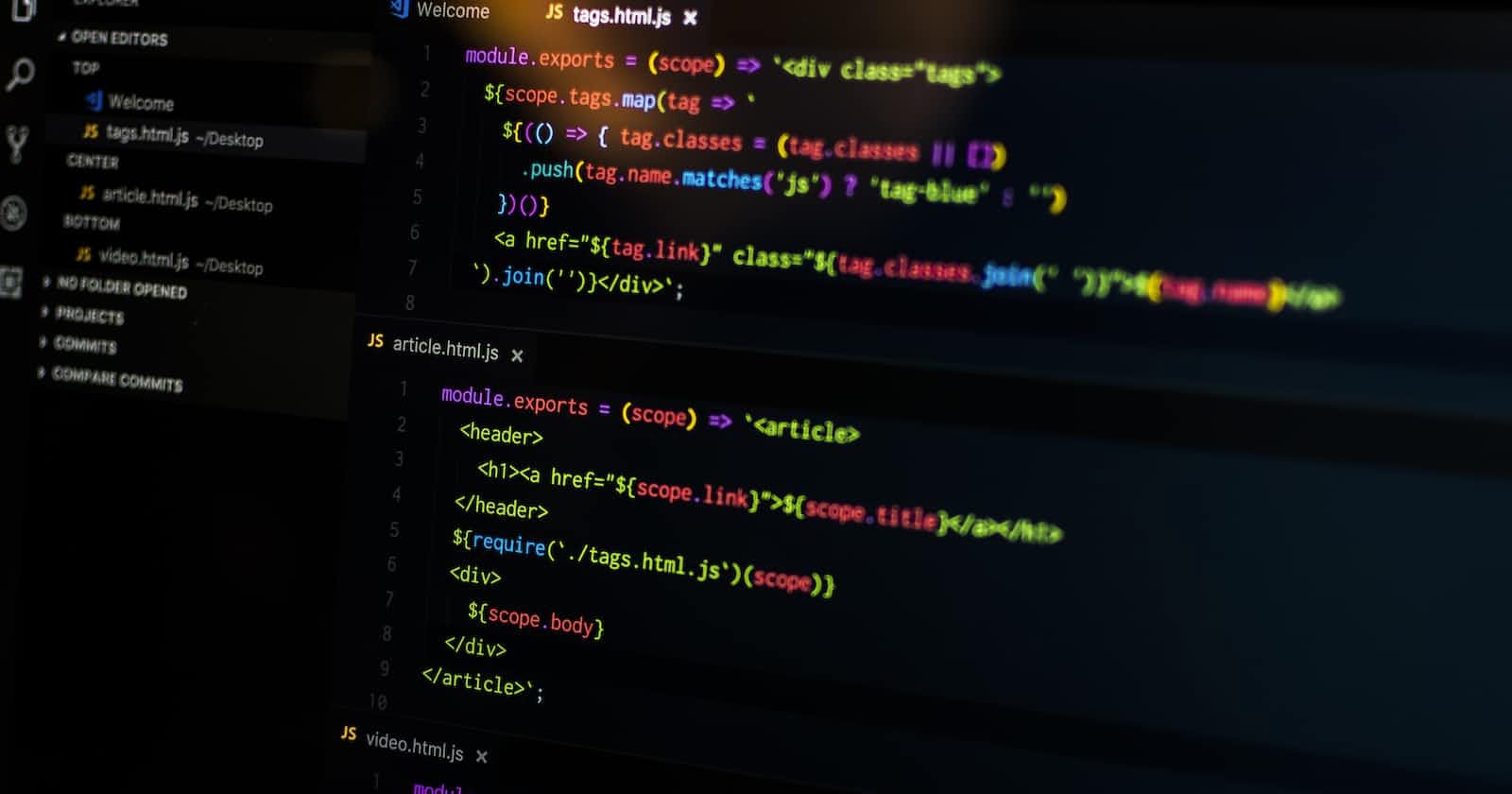
Photo by Pankaj Patel on Unsplash
Mastering JavaScript Arrays: A Comprehensive Guide to Manipulating and Using Arrays
Want to become a master of JavaScript arrays? This comprehensive guide covers everything you need to know about manipulating arrays.
JavaScript arrays are a powerful feature of the language that allows developers to store collections of data in a single variable. Arrays can be manipulated in many ways to add, remove, or modify elements, and this makes them an important tool for developers. In this article, we will explore some of the most common methods for manipulating arrays, and best practices for using arrays, and provide some code examples to demonstrate how to work with arrays in JavaScript.
Manipulating Arrays:
There are many methods available for manipulating arrays in JavaScript. Here are some of the most common methods that developers use to add, remove, or modify elements in arrays:
- push() - adds one or more elements to the end of an array.
let myArray = [1, 2, 3];
myArray.push(4);
console.log(myArray); // [1, 2, 3, 4]
- pop() - removes the last element from an array.
let myArray = [1, 2, 3];
myArray.pop();
console.log(myArray); // [1, 2]
- shift() - removes the first element from an array.
let myArray = [1, 2, 3];
myArray.shift();
console.log(myArray); // [2, 3]
- unshift() - adds one or more elements to the beginning of an array.
let myArray = [1, 2, 3];
myArray.unshift(0);
console.log(myArray); // [0, 1, 2, 3]
- splice() - adds, removes, or replaces elements in an array.
let myArray = [1, 2, 3];
myArray.splice(1, 1, 'a', 'b');
console.log(myArray); // [1, 'a', 'b', 3]
- slice() - creates a new array that contains a portion of the original array.
let myArray = [1, 2, 3, 4, 5];
let slicedArray = myArray.slice(2, 4);
console.log(slicedArray); // [3, 4]
- concat() - combines two or more arrays into a single array.
let myArray1 = [1, 2];
let myArray2 = [3, 4];
let combinedArray = myArray1.concat(myArray2);
console.log(combinedArray); // [1, 2, 3, 4]
Best Practices for Using Arrays:
When using arrays in JavaScript, there are some best practices that developers should follow to ensure that their code is efficient, maintainable, and free from errors. Here are some of the most important best practices for working with arrays:
- Use descriptive variable names - when naming arrays, use descriptive variable names that accurately reflect the data being stored. This will make it easier for other developers to understand your code.
// bad example
let a = [1, 2, 3];
// good example
let numbers = [1, 2, 3];
- Use const for arrays that don't change - if an array doesn't need to be modified, use const to prevent accidental changes. This will make your code more reliable and easier to reason about.
// bad example
let myArray = [1, 2, 3]; myArray.push(4);
// good example
const myArray = [1, 2, 3];
- Use array literals - instead of using new Array(), use array literals to create arrays. This is faster, more concise, and easier to read.
// bad example
let myArray = new Array(1, 2, 3);
// good example
let myArray = [1, 2, 3];
- Use array destructuring - when accessing multiple elements from an array, use array destructuring to make your code more concise and readable.
// bad example
let myArray = [1, 2, 3];
let firstElement = myArray[0];
let secondElement = myArray[1];
// good example
let myArray = [1, 2, 3];
let [firstElement, secondElement] = myArray;
- Use array methods instead of for loops - when iterating over arrays, use array methods like map(), filter(), and reduce() instead of for loops. This will make your code more readable and less error-prone.
// bad example
let myArray = [1, 2, 3];
for (let i = 0; i < myArray.length; i++) {
console.log(myArray[i]);
}
// good example
let myArray = [1, 2, 3];
myArray.forEach((element) => {
console.log(element);
});
How You Can Master Arrays:
Arrays are a fundamental feature of JavaScript, and mastering them is essential for any developer who wants to build web applications. Here are some tips for mastering arrays:
Read the documentation - the JavaScript documentation provides a comprehensive guide to arrays and their methods. Read the documentation to understand how arrays work and how to use their methods.
Practice coding exercises - there are many coding exercises available online that focus on arrays. Practice these exercises to develop your skills in working with arrays.
Build projects - building projects that involve arrays will help you to understand how to use them in real-world applications. Start small, and gradually work your way up to more complex projects.
Conclusion:
In this article, we have explored the different methods of manipulating arrays in JavaScript, best practices for using arrays, and provided some tips for mastering arrays. Arrays are a powerful feature of the language, and understanding how to use them effectively is essential for building web applications. By following best practices and practicing with coding exercises and projects, you can master arrays and become a more skilled developer.

